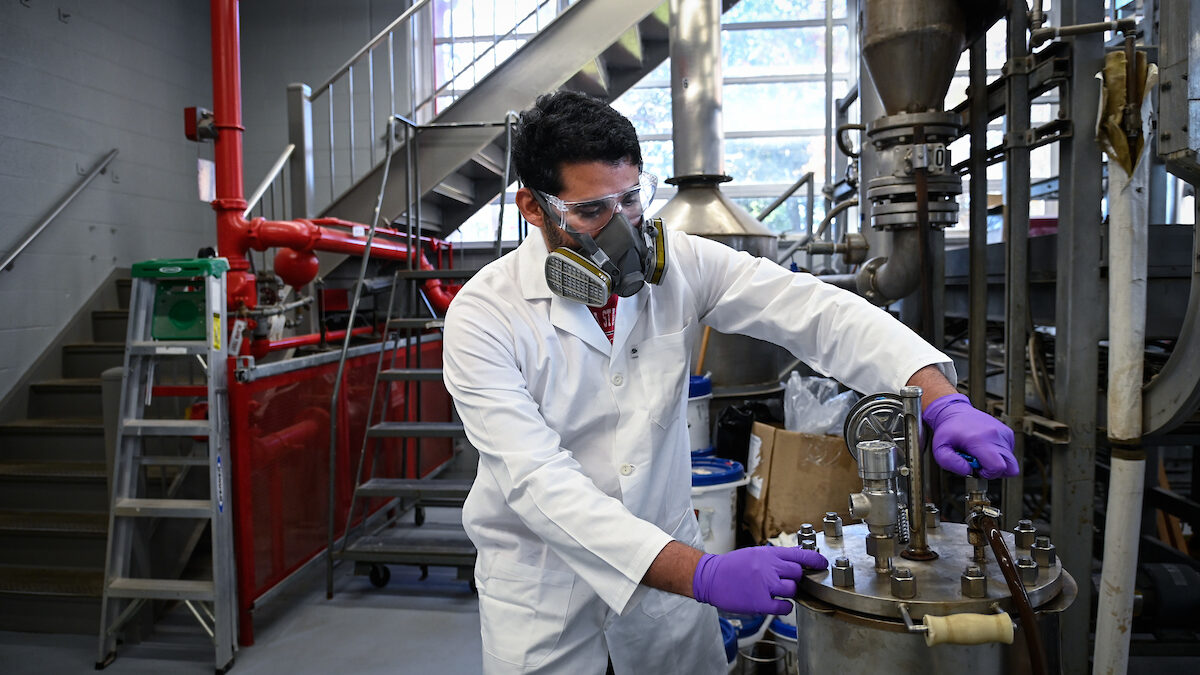Notable Moments – Environmental Health & Safety

Environmental Health & Safety
EH&S has more fully developed and utilized new software to successfully launch a comprehensive lab safety inspection program and is near completion on development of a module replacing a suboptimal lab safety plan platform required by OSHA.
EH&S has become more fully embedded in colleges engaged in hazardous research activities by distributing EH&S staff assignments throughout the numerous safety committees.
In collaboration with Facilities EHS assessed and improved fume hood installations, usage and maintenance. The Inspection team visited over 600 laboratories this past year verifying the proper operation and use of fume hoods. EHS consulted with lab researchers and associated staff whenever a fume hood deficiency was found in order to increase and correct the safe use of the fume hoods.
EHS personnel, together with Fire & Life Safety, conducted a two-day incidental spill management training class. The training included the review of industrial hygiene principles, usage of various chemical detection meters, donning and doffing of personal protective equipment, review of standard operating procedures, tabletop response drills, and hands-on remediation of chemical, biological, and petroleum spills.
Environmental Affairs
Environmental Affairs is in the process of installing new Soil Vapor Extraction treatment technology at the Lot 86 Superfund site. Work included securing funding, obtaining approval of the proposed work plan from the regulatory authorities, installation of three horizontal wells beneath the 8 to 10 feet deep concrete cap at the site, removal of no longer in use equipment from equipment building, and installation of the Soil Vapor Extraction equipment.
Participated in the USEPA/NCDEQ annual hazardous waste inspection of Main Campus with no compliance issues. We also participated in a NCDEQ hazardous waste inspection of the Centennial Biomedical Campus and a successful reinspection of non-compliant labs. We continue working to improve compliance with the MS4 Stormwater permit across campus.
Biosafety Program
The EHS biosafety section hired and trained two new staff members to help address the growing demands of managing laboratory inspections and specific biosafety concerns at the university.
Streamlined the Institutional Biosafety Committee review process while maintaining safety and regulatory compliance requirements and managing a large turnover in committee membership.
Managed the university’s transfer of the Federal Select Agents and Toxins program into the new Plant Sciences Building including updating the BSL-3 certification process.
Fostering a culture of compliance while promoting sustainability, the biosafety team implemented QR code resources estimated to reduce over 14,000 pages of printed paper.
Radiation Safety
The Radiation Protection Program continues to manage turnover in program staff while successfully maintaining a routine and regular presence in campus facilities and providing continuity of oversight and support for users. There are currently 126 authorized radioactive material and radiation producing equipment user permits under 4 licenses and 9 registrations within 196 lab spaces utilized by 1000 trained and authorized faculty, staff and students.
The CVM Terry Center’s LINAC accelerator license was successfully renewed during this period, allowing for the continued active utilization of this facility for cutting edge treatment of radiation oncology patients.
A campus-wide audit currently underway by program staff seeks to assure that all permits are reviewed and maintained up-to-date, and that all users are trained and regularly retrained in radiation safety best practices and key aspects of safety culture.
